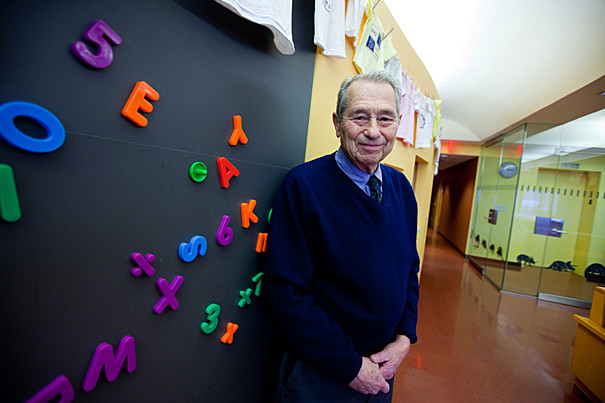Laying the Groundwork in Childhood
"Understanding the Effects of
Temperament, Anxiety, and Guilt"
Jerome Kagan, Ph.D., is Professor of Psychology at Harvard University and Director ofHarvard's interdisciplinary Mind, Brain, and Behavior Initiative.
Rats behave as if they have the capacity for being fearful, surprised, or sexually aroused. There is little evidence, however, to suggest that they experience any of the emotions we call pride, sadness, joy, anxiety, guilt, shame, anger, jealousy, disgust, love, or moral outrage.
Neuroscientists use "fear" to explain the empirical relation between two events: forexample, rats freeze when they see a light previously associated with electric shock. Psychiatrists, psychologists, and most citizens, on the other hand, use the word "fear" to namea conscious experience of those who dislike driving over high bridges or encountering largespiders. These two uses suggest there are several fear states, each with its own genetics,incentives, physiological patterns, and behavioral profiles. These related states of fear shouldbe distinguished from states of anxiety, in which future aversive events are anticipated.
For two decades I have been involved in studying a large group of children from whomwe have learned that different combinations of temperament and life history can produce anexcessively fearful or anxious adolescent or adult. Different fears demand different therapeuticinterventions.
Some children appear to have inherited a temperament that biases them to develop atendency--but does not determine them--to become subdued, timid, and avoidant to unfamiliarevents during childhood. Some children in this subset go on to develop a profile that closelyresembles social phobia in adolescence.
We began when the children--more than 450 healthy, Caucasian, middle-class infantsborn at term without any medical complications--were four months old. When stimulated,twenty percent of the infants responded with agitated limb movement, muscle spasticity, andoccasional arching of the back, accompanied by fretting and crying. We called those infantshigh reactive; we assume, based on neuroscience data, that they inherited a low threshold ofexcitability in the amygdala and its projections.
About 35 to 40 percent of the 450 children showed little motor activity and no distressin response to the same stimuli. We believe the low reactive children inherited an amygdalawith a high threshold of excitability due to a different neurochemistry in the amygdala.
Both groups of children were observed at various intervals. When they were 4-1/2years old, about one-third of the infants who had been high reactive at four months wereextremely subdued, and a month later, shy when they played with unfamiliar children. Bycontrast, only 10 percent of the low reactives were both subdued with the examiner and shywith unfamiliar children.
Only 13 percent of those who had been high reactive at four months, however, showedconsistently high fear at both 14 and 21 months as well as extreme shyness at 4-1/2 years. Bythe time they were 4-1/2, most high reactives (87 percent) had become less fearful and beganto resemble typical children, but none became consistently extroverted. The temperament ofthe high reactive infants constrained their development of an extremely extroverted personalityrather than causing a fearful, anxious personality in most of these children.
The children who showed high fear at all ages were most likely to develop anxioussymptoms by the time they were seven. About half the children with a serious fear ofkidnapping or other danger had been high reactive infants; only 10 percent of those who hadbeen low reactive possessed these anxious symptoms.
The high reactive infants who became inhibited children also displayed extremesensitivity to criticism over violation of standards they believed were appropriate. That is,they seemed as prone to guilt as to fear and anxiety.
Humans are unique among species in the capacity for guilt. With phylogeny, thecentral nucleus of the amygdala, critical to the acquisition of conditioned fear reactions inanimals, became progressively smaller, while the basolateral nucleus and its connections withthe prefrontal cortex were enhanced. This fact, together with an appreciation that humans, butnot primates, show signs of distress when they violate their moral standards, implies that guiltand shame may be as important as fear in everyday human functioning, as well as inpsychopathology. Natural selection favored those with built-in restraint: The human moralsense, which generally keeps us from harming others of our species, is a unique product ofevolution maintained through selection because it ensures our survival.
Post-traumatic stress disorder (PTSD) in veterans has been assumed to be a consequence of anextreme fear reaction to the possibility of being killed. This symptom appears more frequentlyin soldiers who have participated in an atrocity or feel guilty for surviving than in those whocame close to death but did not participate in or witness an atrocity or lose a friend. Feelingsof guilt and depression are as salient in PTSD as is fear. The future study of human emotionswill profit from a careful examination of this complex emotional state, which is qualitatively differentfrom fear but shares a position of influence in both normal and pathological humanfunctioning.
www.psychspace.com心理学空间网

